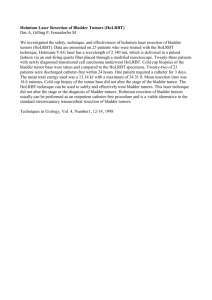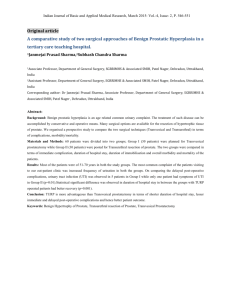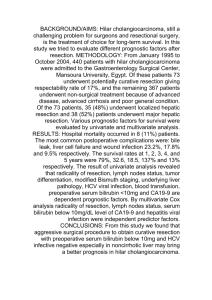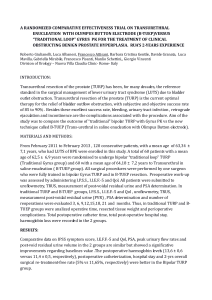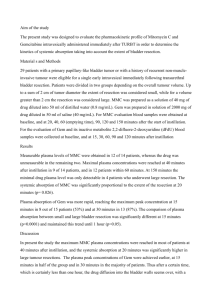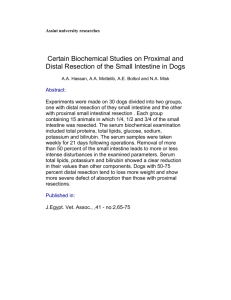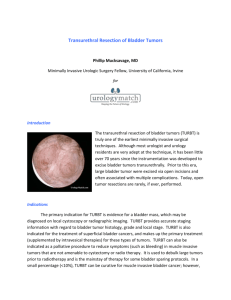Plasmakinetic bipolar vs monopolar transurethral resection of non
advertisement
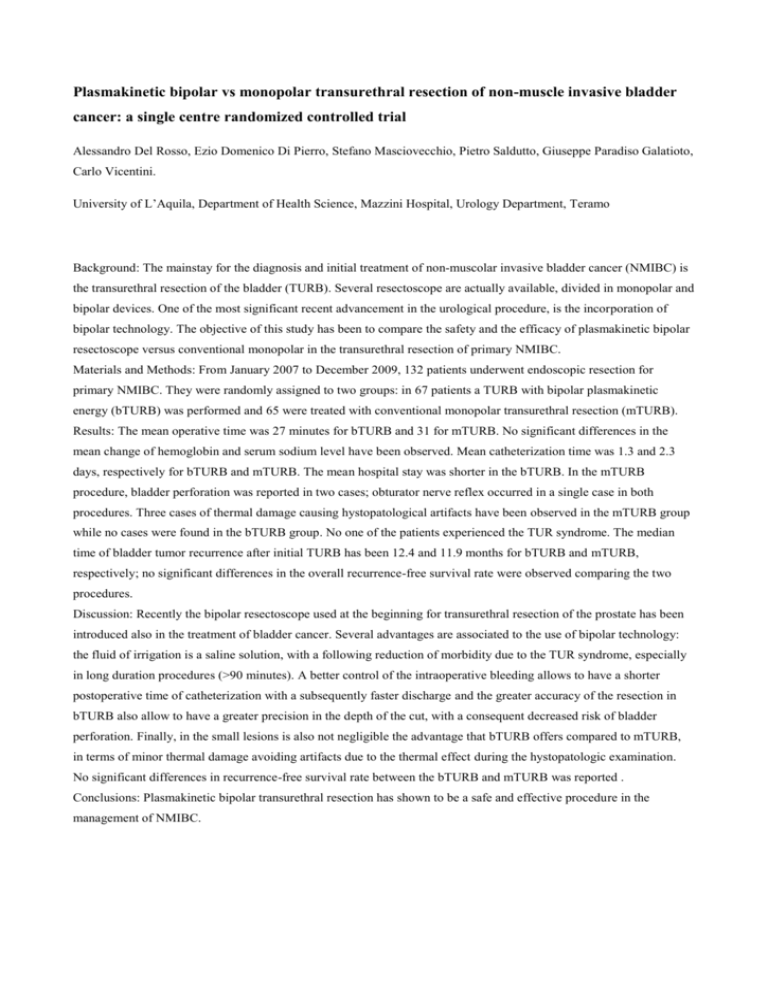
Plasmakinetic bipolar vs monopolar transurethral resection of non-muscle invasive bladder cancer: a single centre randomized controlled trial Alessandro Del Rosso, Ezio Domenico Di Pierro, Stefano Masciovecchio, Pietro Saldutto, Giuseppe Paradiso Galatioto, Carlo Vicentini. University of L’Aquila, Department of Health Science, Mazzini Hospital, Urology Department, Teramo Background: The mainstay for the diagnosis and initial treatment of non-muscolar invasive bladder cancer (NMIBC) is the transurethral resection of the bladder (TURB). Several resectoscope are actually available, divided in monopolar and bipolar devices. One of the most significant recent advancement in the urological procedure, is the incorporation of bipolar technology. The objective of this study has been to compare the safety and the efficacy of plasmakinetic bipolar resectoscope versus conventional monopolar in the transurethral resection of primary NMIBC. Materials and Methods: From January 2007 to December 2009, 132 patients underwent endoscopic resection for primary NMIBC. They were randomly assigned to two groups: in 67 patients a TURB with bipolar plasmakinetic energy (bTURB) was performed and 65 were treated with conventional monopolar transurethral resection (mTURB). Results: The mean operative time was 27 minutes for bTURB and 31 for mTURB. No significant differences in the mean change of hemoglobin and serum sodium level have been observed. Mean catheterization time was 1.3 and 2.3 days, respectively for bTURB and mTURB. The mean hospital stay was shorter in the bTURB. In the mTURB procedure, bladder perforation was reported in two cases; obturator nerve reflex occurred in a single case in both procedures. Three cases of thermal damage causing hystopatological artifacts have been observed in the mTURB group while no cases were found in the bTURB group. No one of the patients experienced the TUR syndrome. The median time of bladder tumor recurrence after initial TURB has been 12.4 and 11.9 months for bTURB and mTURB, respectively; no significant differences in the overall recurrence-free survival rate were observed comparing the two procedures. Discussion: Recently the bipolar resectoscope used at the beginning for transurethral resection of the prostate has been introduced also in the treatment of bladder cancer. Several advantages are associated to the use of bipolar technology: the fluid of irrigation is a saline solution, with a following reduction of morbidity due to the TUR syndrome, especially in long duration procedures (>90 minutes). A better control of the intraoperative bleeding allows to have a shorter postoperative time of catheterization with a subsequently faster discharge and the greater accuracy of the resection in bTURB also allow to have a greater precision in the depth of the cut, with a consequent decreased risk of bladder perforation. Finally, in the small lesions is also not negligible the advantage that bTURB offers compared to mTURB, in terms of minor thermal damage avoiding artifacts due to the thermal effect during the hystopatologic examination. No significant differences in recurrence-free survival rate between the bTURB and mTURB was reported . Conclusions: Plasmakinetic bipolar transurethral resection has shown to be a safe and effective procedure in the management of NMIBC.
